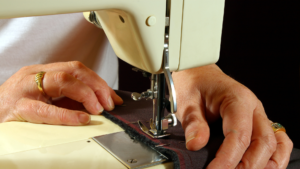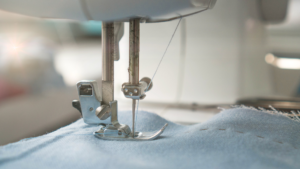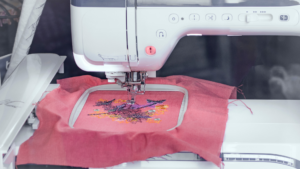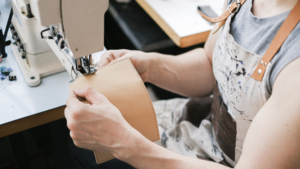Last Updated on August 14, 2021
Today, in this blog post, we’ll continue our guide about the different types of sewing machine threads. This is Part 2 of our sewing machine thread type guide.
For the the part of 1 of our guide, head on over to Types of Sewing Machine Threads: Everything You Need to Know [Part 1].
Silk thread
Silk is used for sewing lightweight, sheer fabrics because it’s thin and strong.
Silk sewing threads are extremely soft to the touch which is great for sewing delicate or sensitive materials (like silk fabric and wool) without causing them any damage from rubbing against a coarse needle thread like polyester can do.
It also doesn’t fray as easily so there’s less of an issue with having to cut off excess string that could get in your way while you’re sewing.
The only downside is that silk sewing machine needles are more expensive than standard types. However, they last much longer since their sharpness isn’t dulled by constant use — so this type of investment may actually be worth it if you sew often enough.
Many people also find that silk sewing machine threads result in better embroidery projects, so you may want to consider this sewing machine thread if you sew for a living or do lots of decorative stitching.
Jeans Thread
Jean threads are particularly used in jeans and denim items. They are characterized by a “waxy sheen” and are made of cotton or rayon.
The most common sewing thread color is white but other colors like red can also be found. If you’re looking to add some personal style to your projects without going overboard with sequins, this is the perfect choice for you!
These sewing threads come in different sizes such as 50wt (medium weight) which is ideal for embroidery. You can use jeans thread for ornamental and decorative stitching as well.
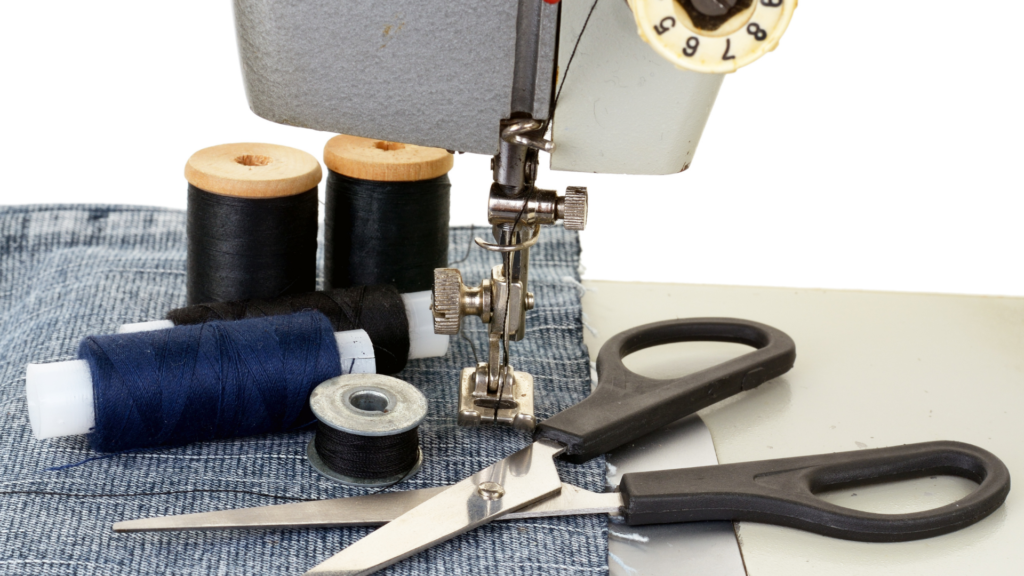
Recycled thread
A recycled thread is what it implies: it’s made up of recycled materials such as plastic to provide an environmental-friendly alternative to the more common sewing machine thread types. It comes in various colors and sewing thread sizes like 50wt (medium weight).
You will find recycled threads online that are specifically made for athletic wear and high-performance apparel. There are also other variations that are made for non-apparel items.
Aside from that, the recycled thread is ideal for projects that require sewing in rugged or hard-to-reach places.
Recycled sewing thread has a low breakage rate which means that the threads won’t easily fray or snap while being pulled through your sewing machine because of its flexibility and durability.
It also comes with an increased resistance to abrasion, so it is more resistant than regular sewing thread when it’s used for projects like sail making, tent manufacturing and upholstery work.
The recycled sewing thread can be knotted tightly without breaking due to its higher tensile strength as well as using less force because of how flexible it is compared to other types of sewing machine threads – this makes stitching on tight areas faster and easier.
As you see, there are many benefits to using recycled threads, but now, let’s look at some cons. Some of the downsides of recycled thread are that it can’t be used on sewing machines that employ a backstitch, and the colors available are limited.
Recycled threads are also cheaper than regular sewing thread which is why many people choose to buy them. You can find recycled sewing threads at craft stores or online stores.
Metallic thread
If it isn’t obvious enough, metallic threads have metals in them. It’s made of a metal filament.
Metallic threads are commonly used for adding stylish and custom designs and details to your projects.
Some of its upsides are that sewing with metallic threads is quick, and machine sewing with them on thicker fabrics doesn’t cause the fabric to stretch and they are resistant to abrasion. This usually results to having beautiful stitches when you’re using metallic threads.
Some downsides would be that the thread will not feed through a needle as easily because there’s metal in it. The sewing machine can also get jammed up more often than normal sewing machines if you’re using this type of thread. It’s also very delicate and easily broken at very high speeds.
When sewing with metallic threads, make sure that you’re in control of the speed. You may also need to reduce your tension a few times with a metallic thread until you get the right tension for your project.
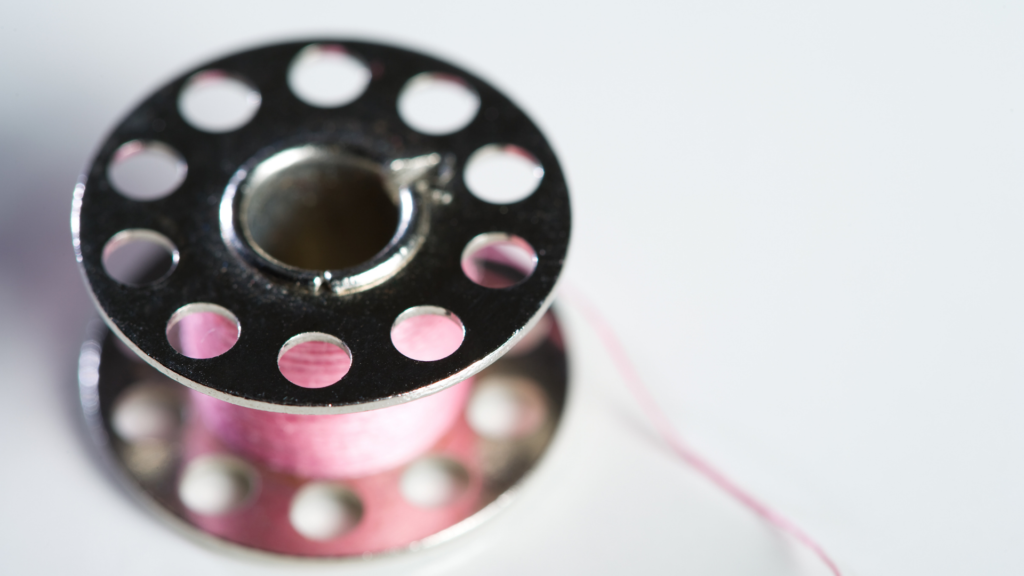
Elastic Thread
Elastic sewing thread is made of synthetic rubber and it stretches when pulled. It is thicker than other types of sewing machine thread.
But it can be found in a variety of thicknesses depending on the sewing machine you are using for your project.
If you’re looking to use this type of sewing thread, make sure that the needles will allow elongation while sewing with them as well.
Elastic threads are commonly used when sewing stretchy fabrics. This is perfect if you’re consistently sewing jerseys, sweatshirts, and leggings.
Elastic threads are not good for embroidery or quilting as they don’t have any colorfastness whatsoever.
This type of sewing machine thread is great for quick mending jobs like hemming pants that you just ripped at the knee when gardening!
If you’re sewing something that needs a lot of movement in an item, then this would be perfect.
Sewing machines use different types of needles so make sure your needle will allow elongation before buying this type of sewing thread.
Invisible thread
Invisible thread is a thin monofilament thread that’s ideal for hiding stitches in your product or project. This brings people’s focus to the fabric, product, or the craftmanship of your work.
However, you must be aware that many sewers say that it’s more difficult to sew with invisible thread than sewing with a thicker thread.
This type of sewing machine thread should only be used on lightweight fabrics and projects that don’t require much movement in the sewing process to avoid any hassle.
When using this kind of sewing machine, you must sew slowly to avoid snagging it or damaging your project as well as the invisible stitches due to fraying problems.
Invisible threads are generally made from nylon material which is why they’re so thin but strong enough for sewing!
If you want something more versatile than just white, there are colors available such as blue, yellow, gray, and black depending on what color scheme you have going in your dressmaking workroom.
Overlock thread
Overlock thread is also called as serger thread. In terms of quality, it’s finer and better than standard sewing machine threads. This sewing machine thread is built for sewing fabrics that have a high level of stretch or tension.
You’ll need to use an overlock sewing machine though should you want the best results possible in this type of sewing project. Overlock threads do not leave any lint-buildup in a serger sewing machine.
You should not use overlock threads on regular sewing machines. Overlock or serger threads have a rougher texture than normal threads and it can damage or jam your sewing machine.
Glitter thread
Glitter thread is sewing machine thread that contains glitter of different colors. It is sewing machine thread with a textured design on the surface to give sewing projects an interesting and striking look.
Glitter threads can be used for embroidery, quilting, or sewing.
Glitter sewing machine threads are a specialty sewing project material. It’s not advisable to be used by beginners since they require special care when being threaded in sewing machines.
When using glitter threads, you may need to readjust your tension and stitching speed might need to be decreased to get the best results.
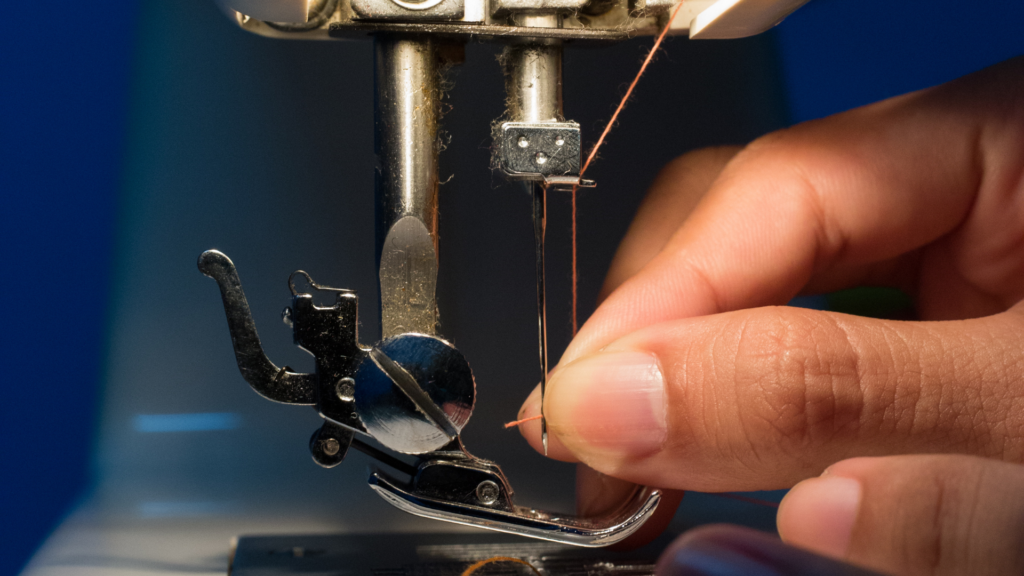
Some Final Words
It can be overwhelming to know that there are lots of sewing machine thread types out there to choose from. You have many types of threads in your arsenal, but the key to creating amazing projects and products is knowing what materials you need for the certain project you’re working on. This includes knowing the right type of thread. Using the wrong thread can ruin your project or damage your machine, which is something anyone wants to happen.
If you haven’t done so yet, read part 1 of our sewing machine thread type guide.
Happy sewing!

![Read more about the article How To Unfreeze A Sewing Machine: A Comprehensive Guide [2023]](https://www.sewkitkit.com/wp-content/uploads/2021/08/machine-3-300x169.png)
![Read more about the article How to Replace a Sewing Machine Needle: A Comprehensive Guide for Beginners [2023]](https://www.sewkitkit.com/wp-content/uploads/2021/07/needle-4-300x169.png)
